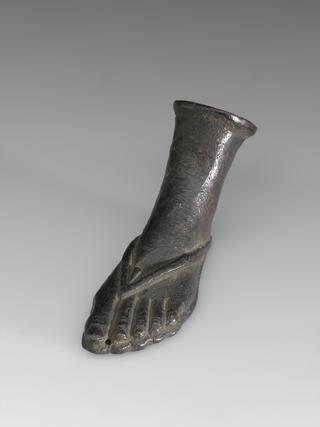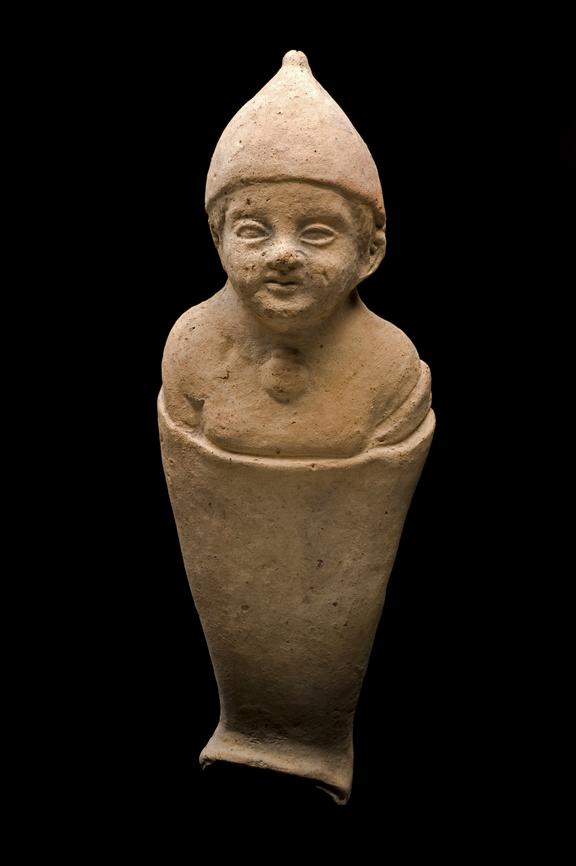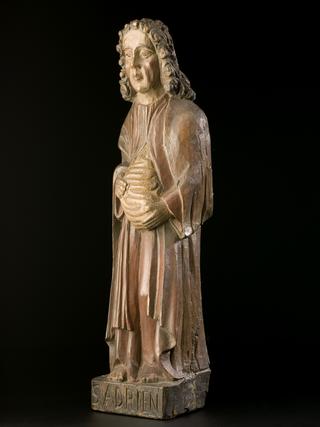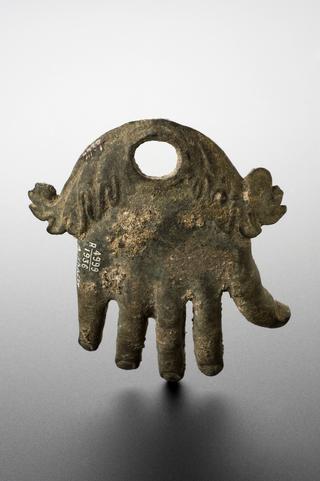
Terracotta votive figure of a young infant, Roman, 200 BCE-200 CE
- Made:
- 200 BCE-200 CE in Roman Empire

Votive figure of swaddled infant wearing cap and amulet, terracottal, probably Roman, 200BC to 200AD
Objects like this were often left at healing sanctuaries and other religious sites as offerings to gods such as Asklepios, the Greco-Roman god of medicine. Usually as a plea for help at times of ill health or as thanks for a cure, this offering of a young swaddled infant may indicate a sick child who needs healing or was perhaps given in the hope that a woman might become pregnant.
Made from bronze or terracotta, as in this case, a large range of different votives were made and offered up in their thousands. Although it originated in earlier cultures, this practice became very popular in Roman Italy – particularly between the 400s and 100s BCE.
Details
- Category:
- Classical & Medieval Medicine
- Collection:
- Sir Henry Wellcome's Museum Collection
- Object Number:
- A636026
- Materials:
- terracotta
- type:
- votive offering




